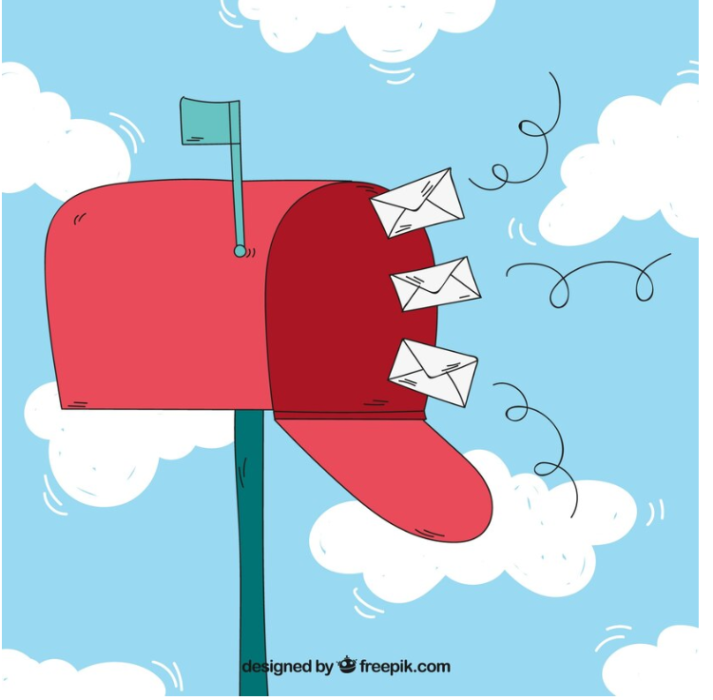Email Design Trends for 2024: What’s New and What’s Out


As we approach 2024, email design continues to evolve, influenced by changing technologies, user preferences, and industry standards. Staying ahead of the curve is essential for marketers and designers who want to ensure their emails stand out in crowded inboxes. Let’s dive into the latest email design trends for 2024, highlighting what's new and what's on the way out.
1. Interactive and Dynamic Content Interactive elements are no longer just a trend; they are becoming a standard expectation. Features such as embedded polls, quizzes, and carousels offer recipients a more engaging experience. For instance, incorporating live product previews or interactive maps can make emails more captivating and drive higher engagement rates.
2. Personalization Beyond the Basics While personalization has been a focus for years, 2024 is pushing the boundaries with advanced personalization techniques. Beyond using the recipient’s name, modern emails can leverage AI to deliver content based on browsing history, past purchases, and even real-time behavior. Dynamic content blocks can tailor the message to each individual’s preferences, making emails feel more relevant and personal.
3. Minimalist and Clean Design In a world where attention spans are shrinking, less is often more. Minimalist design, with plenty of white space and a focus on clean, simple layouts, is gaining traction. This approach not only enhances readability but also helps emphasize key messages and calls to action. Bold typography and high-quality images are used strategically to draw attention without overwhelming the reader.
4. Micro-Animations and Micro-Interactions Micro-animations and interactions add a touch of modernity to email design. These small, subtle animations can enhance user experience without being distracting. Examples include buttons that change color on hover, animated GIFs, and smooth transitions between content sections. When used judiciously, these elements can make emails feel more interactive and lively.
5. Dark Mode Optimization With dark mode becoming increasingly popular across devices and apps, optimizing email designs for dark mode is essential. Ensuring that text is legible and images are appropriately displayed in both light and dark modes will improve accessibility and user experience. Designers should test emails in various lighting conditions to ensure consistency.
6. AI-Driven Content Recommendations AI is not just about personalization; it also plays a role in content recommendations. Algorithms can analyze user behavior and preferences to suggest products or content that are likely to resonate with each recipient. This level of targeted recommendation can significantly increase engagement and conversion rates.
7. Inclusive and Accessible Design Accessibility is more than a trend—it's a necessity. Designing emails that are accessible to all users, including those with disabilities, is increasingly important. This includes using high-contrast colors, descriptive alt text for images, and ensuring that emails are navigable with screen readers. Inclusive design not only broadens your audience but also demonstrates a commitment to user-friendly practices.
1. Overly Complex Layouts Gone are the days of overly complex and cluttered email designs. While elaborate layouts may have been eye-catching, they often led to confusion and diminished user experience. The trend is shifting toward simpler, more streamlined designs that are easy to navigate and understand at a glance.
2. Heavy Use of Stock Photos Stock photos have lost their appeal, particularly when they appear generic and uninspired. Modern email designs favor authentic, original images and visuals that resonate with the brand’s identity. Custom imagery and user-generated content are becoming more popular as they add a personal touch and foster a stronger connection with the audience.
3. Text-Only Emails Text-only emails are becoming less effective as recipients expect richer, more engaging content. While simplicity has its place, incorporating visual elements such as images, videos, and interactive features can significantly enhance the effectiveness of an email campaign.
4. Generic Calls to Action Generic and uninspired calls to action (CTAs) are falling out of favor. In 2024, there’s a stronger focus on creating compelling and actionable CTAs that are tailored to the recipient’s needs and interests. Personalizing CTAs and making them more contextually relevant can lead to higher conversion rates.
5. Lack of Mobile Optimization With mobile email opens continuing to rise, neglecting mobile optimization is no longer an option. Emails must be designed to look and function well on all devices, with responsive layouts and touch-friendly elements. Failure to prioritize mobile optimization can result in a significant loss of engagement.
6. Overloading with Information Emails overloaded with information and too many calls to action can overwhelm recipients and lead to disengagement. Effective email design for 2024 focuses on clear, concise messaging with a single, well-defined purpose. Streamlined content and a focused approach help drive better results.
As email design trends continue to evolve, staying updated with the latest practices is crucial for achieving effective communication and engagement. Embracing interactive elements, advanced personalization, and accessible design will help ensure that your emails not only capture attention but also deliver a compelling user experience. By moving away from outdated practices and adopting these fresh approaches, you can set your email campaigns up for success in 2024 and beyond.
Feel free to adapt these trends to your unique brand voice and audience needs, and watch your email engagement soar!
Leave a Reply